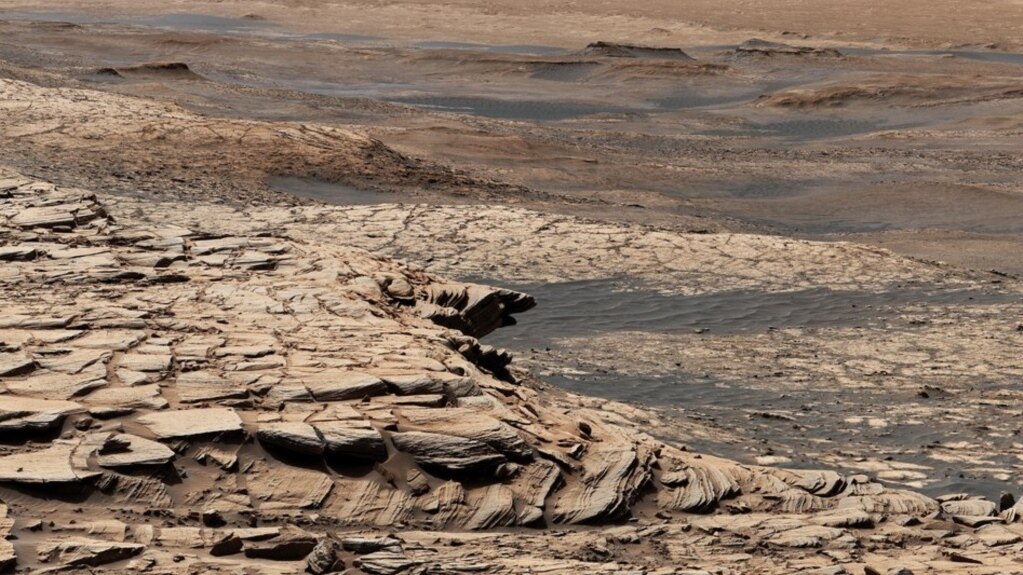A new study suggests that current tools used by scientists to look for signs of life on Mars may not be effective enough to make new discoveries.
A group of international scientists is raising questions about the instruments used on the latest spacecraft and vehicles to explore Mars. The concerns started after researchers carried out tests on soil and rocks in Chile’s Atacama Desert. The area is one of the driest places on Earth and one of the oldest deserts in the world.
The area – which is geologically similar to Mars – is often used by scientists to carry out experiments to improve Mars research methods.
The team tested material from a fossil-rich area in the desert called Red Stone. It was once a body of water that now contains a large collection of microorganisms. Such microorganisms, also called microbes, are commonly studied in the search for ancient life on Mars.
The American space agency NASA says this part of the Atacama Desert is dry and rocky and experiences extreme temperatures and severe radiation from the sun. “If you can find life here, you might be able to find it in an even harsher environment – like the surface of Mars,” the space agency said in a statement.
Researchers from NASA and other organizations have spent time in the desert testing instruments meant to be used to search for signs of ancient life forms on Mars. Such testing is carried out in areas where bodies of water once existed.
This is because those areas, called deltas, contain higher levels of ancient microbes to study. The Red Stone area was a river delta about 100 million years ago.
In the most recent research, the team tested four instruments at Red Stone that are either currently being used on Mars or are to be used in the future. Research results were recently published in a study in Nature Communications.
The scientists said the instruments were not able to make clear identifications of several “signatures,” or signs, that would suggest the presence of “current and ancient microorganisms.”
The researchers said the instruments did find “numerous” microbes of unknown classification. Scientists call such microbes “dark microbiome” and they are of limited use in efforts to search for past life on Mars.
The team said their testing led them to believe that the latest instruments used on Mars “might not be sensitive enough” to effectively make discoveries about possible life.
Armando Azua-Bustos was the study’s lead writer. He said new instruments and technologies should be considered to improve the current tools used to confirm microbes on Mars.
Azua-Bustos is a research scientist at the Center of Astrobiology in Madrid, Spain. He said ineffective instruments can make confirmed identifications of microbes extremely difficult. The high chance of getting false negatives in the search for life on Mars “highlights the need for more powerful tools,” he said.
The team is suggesting that space agencies either put more complex instruments on Mars or bring samples back to Earth for close examination. Such efforts will be needed “to conclusively address whether life ever existed on Mars,” the researchers said.
Both of these plans, however, are extremely difficult to carry out, said Alberto Fairén. He is a visiting scientist in the Department of Astronomy at Cornell University in New York.
Fairén urged planetary researchers to decide which methods are more effective at searching for past life on Mars. The first possibility would be to use the limited abilities and instruments currently on Mars for studying many samples. The other would be to have limited samples examined by the best instruments on Earth designed to identify signs of microbial life.
NASA currently operates two explorers, or rovers, on Mars. One vehicle, Curiosity, is searching an area called Mount Sharp, within the planet’s Gale Crater. Curiosity has been active in the area since landing on Mars in 2012. In addition, NASA’s Perseverance rover has been gathering rock, soil and atmospheric samples at Mars’ Jezero Crater since September 2021. Both areas are believed to have contained large water bodies in the distant past.
Materials collected by the rovers are expected to be returned to Earth in a future mission. That mission – a joint effort between NASA and the European Space Agency (ESA) – is planned for 2028.
I’m Bryan Lynn.

